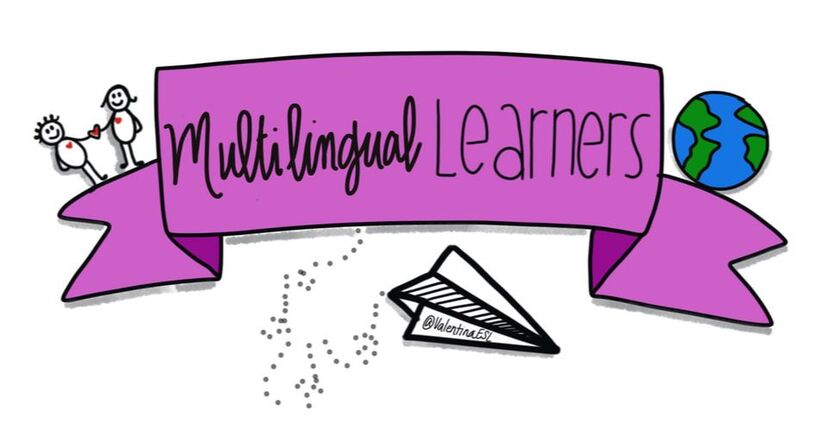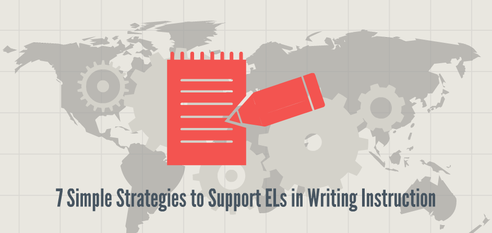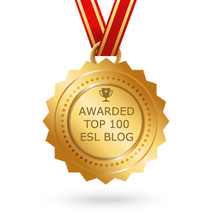|
1. Model Each kid benefits from seeing how to write before they DO the writing. BUT for English Learners this is even more important because language structures may vary from their native language. For example, if I want my students to write about themselves describing their age, I might show them that in English we write: " I am nine years old." This is different from other languages like my native language where a person might say, "I have nine years." Modeling what we expect from students gives them a clear goal for their writing. 2. Be Explicit Don't beat around the bush and hope that kids discover what you want them to learn. Literally tell me what the goal is and what the expectations are. Leave nothing up for guessing. Content and language objectives are a great way to start when being explicit. For instance, "Today we are going to revise our writing for word choice. We will do this by reading our draft to a partner and discussing sound words." Then use an anchor chart that supports these objectives. Show students how you to do it using simple steps and let them try.
3. Anchor Charts Anchor charts that are made with students, clear, and interactive are best for all students. If kids can go back to the anchor chart while you are working with a small group and they use the anchor to support their independent learning, then you know it's a good one. The best anchor charts have minimal text and are supported with sketches, pictures or graphics. An anchor chart is like a finger print of the teaching that took place. In some cases, students need their own mini-anchor chart to keep in their writing journal for easy reference. Taking a picture of the chart and printing it small or making a copy of the chart on a sticky note is a way to give the student an artifact from the lesson. 4. Language Level Keeping each students' English language level in mind while they learn to write in English is critical. Second language learners may not be on grade level YET. But they will if we support them using language scaffolds in writing. As beginners in language, they may first need to use pictures in their writing. Labeling, copying, and talking about the pictures will support their language and writing growth. The use of leveled sentence and paragraph frames will also benefit students as they continue to learn English. Remembering that even students who are near grade level in English will still benefit from support in writing. Academic writing and grammatical structures can pose a struggle for students who are learning content and language simultaneously. 5. Sentence Stems The use of sentence stems has become more common. And that's a great thing. However, we can do better if we tailor the use of sentence stems to meet the specific needs of ELs. Beginner ELs have extremely different writing needs than Advanced ELs. Both have needs and we want both of them to grow in proficiency, but if we prescribe the same sentence stem to them, we are doing a disservice to them. It would be like if a doctor prescribed the same treatment to each patient that walked into his door. Instead, we need to assess each student and prescribe what they need at the time (not all year because if we do a great job, they won't need the same supports all year). 6. Targets This seems pretty obvious but it's often forgotten. We all need targets. When I decided to go back to college to get my Master's Degree, I had to complete an Action Research Project. I had never heard of one before, so in my mind it was a vague project. It was totally new to me. I couldn't imagine how long it needed to be, what sections it had to include, what it looked like in general, etc. I needed examples of Action Research Projects in order to be able to hit the mark. Our kids need the same and these examples need to be attainable for them. They should be peer examples and not adult authors. Yes, mentor texts are great and I love reading them to my students, too. But I can't possibly expect my ELs to write like Kate DiCamillo right now. I need them each to feel successful and them I continue to lift the bar. Success and lift the bar and repeat. 7. Talk Enough cannot be said about the value of student discourse in the classroom. Talk is vital for ELs. In the early stages of language development, they may be reluctant and that's okay. However, the opportunities for talk should always be present. Structured conversations don't have to take long (35 seconds to 2 minutes) but their value is tremendous! My favorites are using talking heads or Q Triple S A. We know that the person who does the talking is the one who is doing the learning. Unfortunately if the talk is mostly coming from the teacher, then the teacher is probably learning more about the subject than the students are. I have to be honest here and tell you that in my early years of teaching I was very guilty of being center-stage in my classroom and talking more than my students. I thought it was my job to deliver the content TO them. It was only after I realized that my talking was preventing them from uncovering the content that I had a mind-shift. I had to let them do the talking. I had to restructure the classroom environment and provide the students a way to discuss, negotiate for meaning, evaluate their thinking, and clarify by holding structured conversations. When students talk before they write, their writing becomes more solid and definitely greater than without talk. Writing is not just a way to checking for understanding. Writing can help students to build on their existing knowledge. It can help them dig deeper into their thoughts and understandings. Writing is a powerful way to support learning.
Alicia Petit
9/15/2022 09:19:48 am
Love the posters. Was hoping to have writing poster also. Is this available? Comments are closed.
|
Categories
All
|


 RSS Feed
RSS Feed
